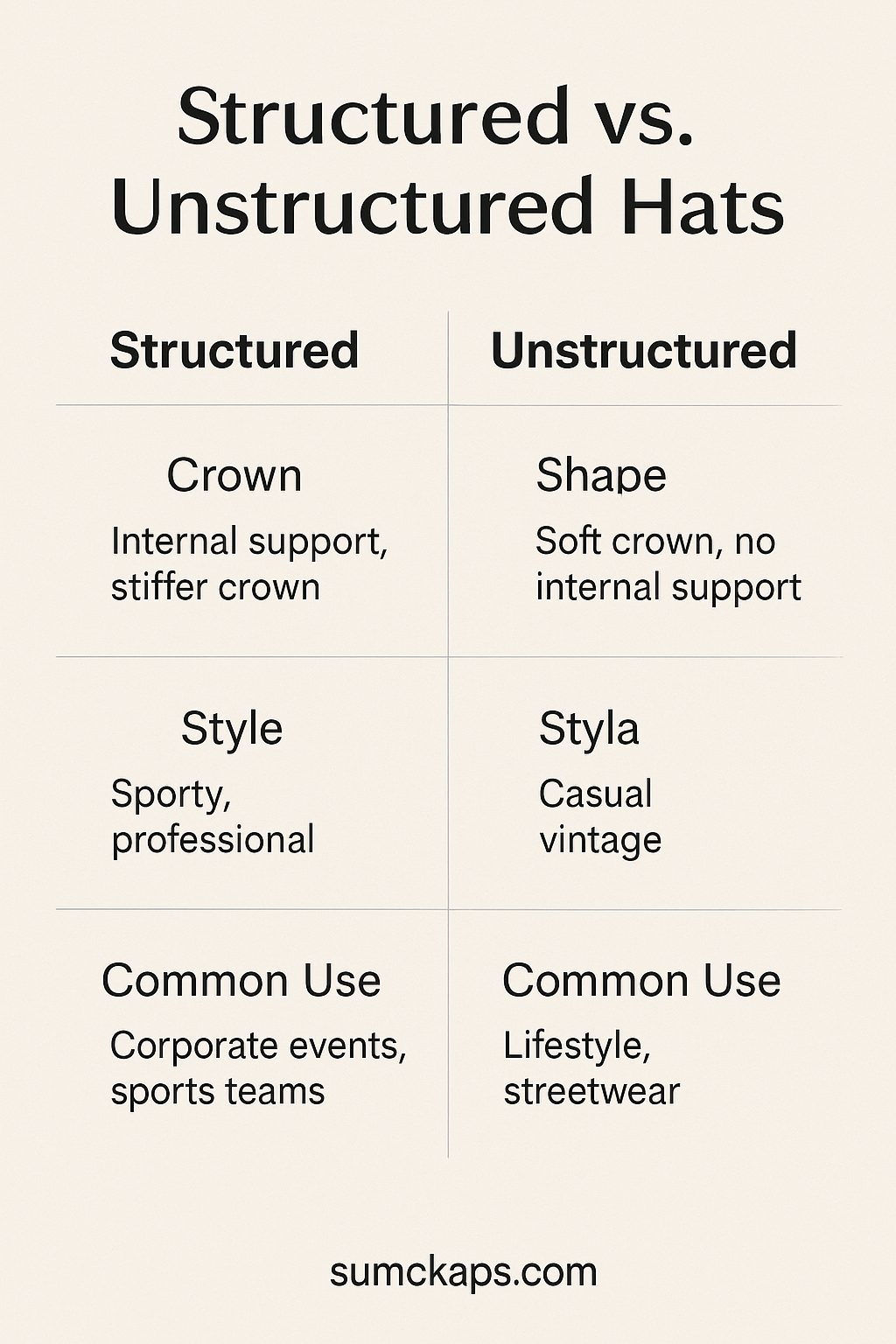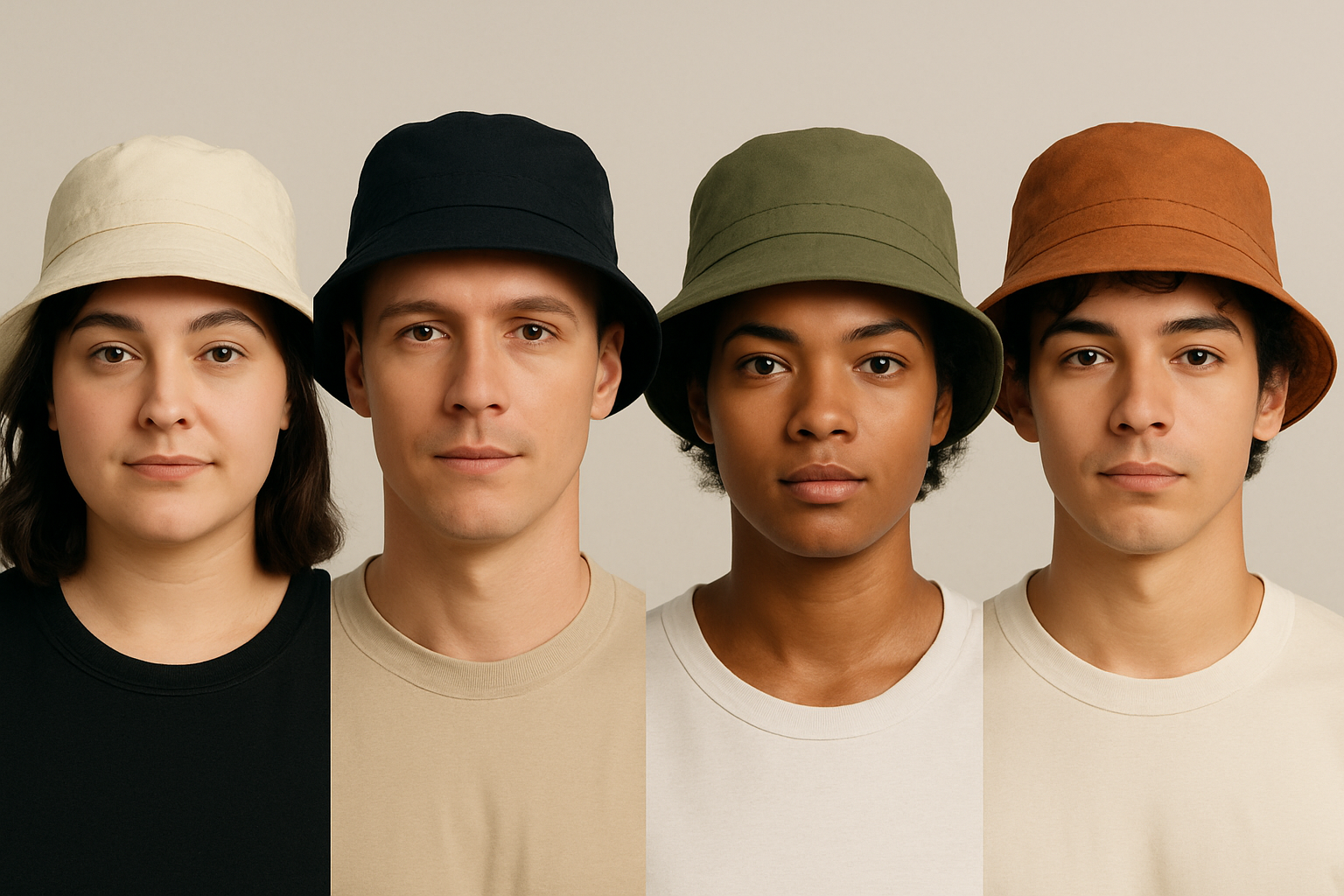When shopping for the perfect hat—whether for personal style, brand promotion, or retail purposes—you’ll often come across two terms that seem simple but carry deeper implications: strutturato e non strutturato. At first glance, the difference might seem purely aesthetic, but in reality, it impacts everything from fit and feel to durability, branding potential, and even the message your hat sends. Understanding this distinction is essential for fashion-conscious consumers, streetwear enthusiasts, and business buyers alike. In this guide, we break down the real meaning behind structured and unstructured hats, why it matters, and how to choose the right one for your needs. Let’s explore the form, function, and fashion behind one of the most underrated design choices in headwear.
What Does “Structured” and “Unstructured” Hat Mean?
At the heart of every baseball cap, dad hat, or trucker hat is one subtle but defining feature: struttura. It’s what gives the hat its shape, its attitude, and in many cases, its intended purpose. But what exactly do “structured” and “unstructured” mean in the world of headwear—and why should you care?

Structured Hats: Built to Hold Their Shape
A structured hat is designed with a reinforced crown, typically supported by a piece of interlining (often made of buckram or other stiff fabric) inside the front two panels. This extra support gives the hat a more rigid, upright profile, helping it retain its shape even when not worn. Structured hats project a crisp, clean look, making them ideal for:
- Corporate branding and promotional giveaways
- Sports teams and uniforms
- Streetwear styles that demand a bold silhouette
Think of snapbacks or performance hats—most fall into the structured category because they need to look polished, structured, and logo-ready.
Unstructured Hats: Relaxed and Effortlessly Cool
On the other hand, an unstructured hat does away with internal support. The result? A soft, slouchy crown that molds to the natural shape of your head. This gives off a laid-back, lived-in vibe that’s perfect for:
- Casual, everyday wear
- Outdoor activities and travel
- Vintage or minimalist fashion styles
Dad hats, for example, are almost always unstructured, which contributes to their nostalgic and effortlessly stylish appeal.
Material & Construction Differences
While structure is often determined by internal support, materials also play a role. Structured hats tend to use thicker fabrics like canvas, wool blends, or performance polyesters, while unstructured caps often rely on softer cotton twill, washed denim, or lightweight linen.
From stitching techniques to panel tension, every element in the hat’s construction affects how it fits, how it looks, and how it wears over time.
Structured vs. Unstructured: A Visual Comparison
To help you quickly spot the difference, here’s a simple side-by-side image:

Features Of Structured And Unstructured Hats Style
Understanding the specific traits of structured and unstructured hats can help you make smarter style, comfort, and branding decisions. Below, we explore the construction, characteristics, pros, and cons of each style—along with popular examples—to help you choose the right hat for your audience or brand.
Structured Hats
Costruzione:
Structured hats are built with internal support, typically using buckram or a similar stiff fabric in the front two panels of the crown. This reinforcement allows the hat to maintain a crisp, defined shape whether it’s worn or not. Most structured hats also have a pre-curved or flat brim and are made from durable materials like cotton twill, wool blend, or performance fabric.
Caratteristiche principali:
- Rigid, upright crown
- Retains shape when off the head
- Sharp, polished silhouette
- Often has a higher profile (especially in snapbacks or trucker hats)
Vantaggi:
- Ideal for logos and embroidery – The stiff front provides a clean canvas for branding
- Professional appearance – Common in uniforms, athletic wear, and promotional gear
- Shape longevity – Holds up well over time, especially in retail and display
Disadvantages:
- Less moldable fit – May not conform comfortably to all head shapes
- Can feel stiff or bulky – Especially in hot or casual environments
- Limited flexibility – Not ideal for packing or compressing
Examples of Structured Hats:
- Cappelli snapback – With their flat brims and structured fronts, perfect for streetwear
- Cappelli da camionista – Featuring a firm foam front and mesh back
- Cappellini a 5 pannelli – Often designed with a structured silhouette for branding
- Performance hats – Used in golf or sports, engineered to retain form
Unstructured Hats
Costruzione:
Unstructured hats skip the internal support altogether. Their crowns are made purely from soft fabric, such as cotton twill, washed denim, or canvas, which allows the hat to slouch or collapse when not being worn. They usually have a low-profile fit and a more broken-in look from the start.
Caratteristiche principali:
- Soft, collapsible crown
- Conforms to the head’s natural shape
- Leggero e traspirante
- Relaxed, low-profile appearance
Vantaggi:
- Comfort-first design – Fits more naturally and molds with time
- Travel-friendly – Easy to pack and compress without damage
- Effortless style – Popular in lifestyle and vintage fashion circles
- Worn-in aesthetic – Appeals to younger and more casual demographics
Disadvantages:
- Less ideal for logos – Embroidery can sink into soft fabric
- Doesn’t hold form – Might appear sloppy in formal or uniformed contexts
- Shorter visual lifespan – May fade or sag over time with frequent use
Examples of Unstructured Hats:
- Cappelli da papà – Known for their curved brim and soft crown
- Washed cotton berretti da baseball – Feature a relaxed, worn-in look
- Rope hats – Often unstructured with decorative rope across the brim
- Vintage-style hats – Mimic retro aesthetics with low-profile construction
- Cappelli a secchiello – Soft-sided hats with downward-sloping brims for full coverage
Key Differences Between Structured and Unstructured Hats
| Caratteristica | Structured Hat | Unstructured Hat |
|---|---|---|
| Supporto per la corona | Yes (interlining) | No |
| Shape Retention | Eccellente | Soft/relaxed |
| Stile | Sporty, professional | Casual, vintage |
| Common Use | Corporate events, sports teams | Lifestyle, streetwear |
FAQ: Structured vs Unstructured Hats
The key difference lies in the crown construction. A structured hat includes internal support—usually buckram—giving it a firm, upright shape. An unstructured hat has no internal support, resulting in a softer, more relaxed crown that conforms to your head. Structured hats are often used for branding and professional settings, while unstructured ones are preferred for casual, everyday wear.
A dad hat is typically unstructured. It features a soft crown, curved brim, and low profile that sits closer to the head. Its relaxed fit and casual appearance are what make it a staple in lifestyle and vintage fashion.
Yes, you can add a logo to an unstructured hat, but it’s important to consider the fabric. Since unstructured hats lack firm backing, detailed embroidery might appear less defined or slightly contoured to the hat’s shape. For best results, use simple logos o screen printing techniques.
For larger heads, unstructured hats are often more comfortable. They provide a flexible fit and adapt to different head shapes without the pressure of a stiff front panel. Look for styles with adjustable closures, like strapbacks or snapbacks, for added versatility.
Yes, unstructured hats made from natural fabrics like cotton can shrink slightly if exposed to heat during washing or drying. To prevent this, it’s best to hand wash the hat in cold water and air dry it. Avoid machine drying, as it may alter the fit and fabric texture.



